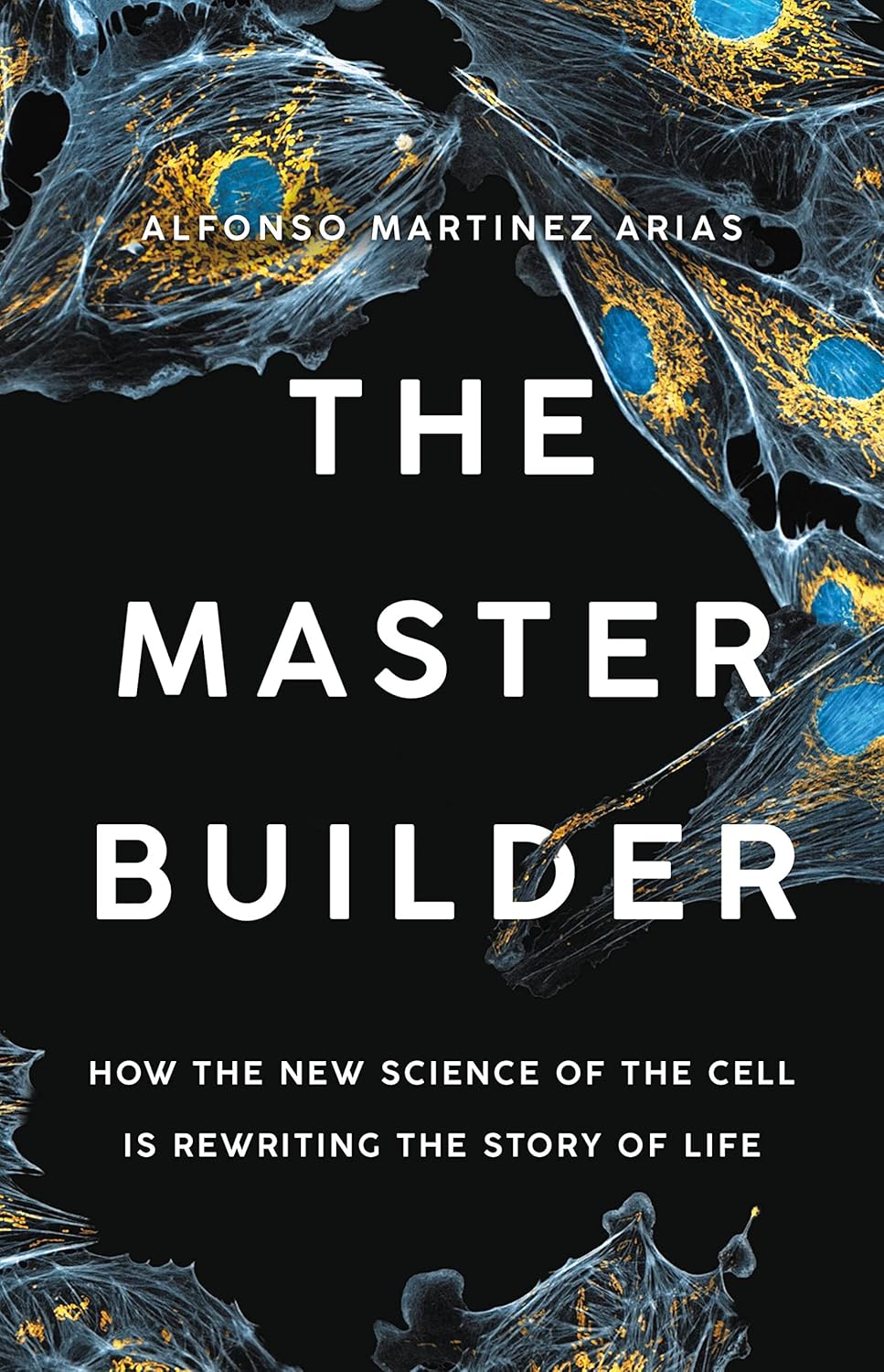
What defines who we are? For decades, the answer has seemed obvious: our genes, the “blueprint of life.” In The Master Builder, biologist Alfonso Martinez Arias argues we’ve been missing the bigger picture. It’s not our genes that define who we are, but our cells. While genes are important, nothing in our DNA explains why the heart is on the left side of the body, how many fingers we have, or even how our cells manage to reproduce. Drawing on new research from his own lab and others, Martinez Arias reveals that we are composed of a thrillingly intricate, constantly moving symphony of cells. Both their long lineage—stretching back to the very first cell—and their intricate interactions within our bodies today make us who we are.
Engaging and ambitious, The Master Builder will transform your understanding of our past, present, and future—as individuals and as a species.
Most of us are familiar with the “DNA as the blueprint of life” idea—that DNA contains all the information necessary to build an organism, whether that organism is a simple amoeba or a complex human being.
In The Master Builder: How the new science of the cell is rewriting the story of life, Alfonso Martinez Arias uses developmental mechanisms to argue that this DNA-centric view misses the importance of the cell. He wants to convince his readers that we can get closer to a deeper and more nuanced understanding of how complex, multicellular organisms develop and how they evolved but, to get to this deeper understanding, we need to let go of our gene-centric view of life, widen the lens, and focus on the cell.
Martinez Arias has the credibility to make this bold claim. He has published hundreds of peer-reviewed scientific papers, many in prestigious journals such as Nature, Science, and Cell. After many years as a Professor of Developmental Mechanics at Cambridge University, he is currently an ICREA Research Professor in the department of systems bioengineering at the Universitat Pompeu Fabra in Barcelona, Spain. His book is packed with information gleaned from his own research and that of other developmental biologists throughout his long and distinguished career.
He makes his argument in three parts. Part One concedes that cells use genes/DNA to communicate with one another and for the information they need to build cellular structures. Part Two focuses on the early events of organismal development, specifically gastrulation, a very early developmental stage in which layers of tissue form a gastrula. He likens the processes to a choreographed dance of sorts in which cells communicate and specialize to set up a body plan and axes. In Part Three Martinez Arias focuses on gastruloids. While gastruloids sound like something that might come from outer space to collide with Earth they are actually three-dimensional aggregates of embryonic stem cells that mimic early mammalian development in a lab setting. Scientists use them to study development, drug efficacy and side effects, and basic cellular and tissue functions.
Moving from a gene or DNA-centric view to a cell-centric view may seem trivial to non-biologists. To this biologist it requires quite a shift in perspective and Martinez Arias only partially pulls it off.
I admit to a largely DNA-centric view of life. But I also love cells and have spent years studying them. It is tempting to believe that the answers to all biological answers can be found in DNA and scientists probably speak as if that were the case too often. When pushed, however, I and probably most biologists would nuance that perspective. It is impossible to study cells and fail to recognize their complex structures, movements, responses to stimuli, and interactions with each other and the environment.
What I found most intriguing about Martinez Arias’ book is his argument that the “blueprint” analogy, commonly used when describing the role of DNA and genes, should be replaced with a “hardware store catalog” analogy. He would like us to see DNA as the catalog from which cells order plans, proteins, tools, and materials it needs to build the complex structure that is a cell.
While I appreciate this new analogy, I admittedly remain unconvinced. Perhaps I’m stuck in my own paradigm. What I find most attractive about this argument and, at the same time, resist most strongly, is that Martinez Arias seems to be asking us to replace one centric view with another—DNA centrism with cell centrism. I think I’d like to resist both and embrace both. It’s not one or the other. It’s both and. Neither view is complete.
Years ago, my chemistry professor helped us understand that models or analogies are helpful but only to a point by considering someone who has never seen an elephant in any form—real, pictures—nothing. He explained that a stuffed elephant helps us understand certain characteristics of actual elephants but fail to capture others. On the other hand, a large vehicle may not capture what an elephant looks like, but it comes closer to representing size, weight, energy use, and movement. Neither are complete. Both can be helpful.
Perhaps Martinez Arias would have been better served to ask readers to broaden their view of life to include not only DNA but also the whole cell. Both/and.
Who would enjoy this book? My Cell Biology students enjoyed it and felt like they learned a lot from it. They were well-equipped to handle the sometimes technical narrative. Non-scientists will probably find this book difficult to navigate. However, for non-scientists who are interested in cells and development, the task would be worth it.


4 Responses
Sara, thanks for your summary introduction of this book. Your discussion touches on the classic dialogue/tension between reductionism and holism. As your examples illustrate, there is also an additional centrism, that of the organism. Even gastrulation is not just a function of the cell or the so-called DNA blueprint, but of the guiding principles of the development of the organism.
Thank you, Sara. I appreciate the brain stretch. Its good to think outside the box, or cell as the case maybe.
Thank you Sara,
You open a door for us and we see a world that is complex, profound, and mysterious, a world that is fuller and richer the further up and further in we travel.
Thanks for this, Sara. The same framework can be applied to various debates, the Bible vs science, for example, or the Creation Museum, Noah’s Ark Museum, even Sola Scriptura. If one has never seen an elephant, they don’t address the subject, let alone authoritatively describe one. The ( more recently canonized and assembled and defended) Bible says precious little about many subjects because those subjects (inerrancy, astronomy, genetics, micro-biology, etc.) did not exist as subjects at the time various writers assembled their memoirs, stories, or letters. Headship, for example, was never questioned because it was never questioned. To some of us, this is taking a high view of scripture, something more like the scientific method being applied.